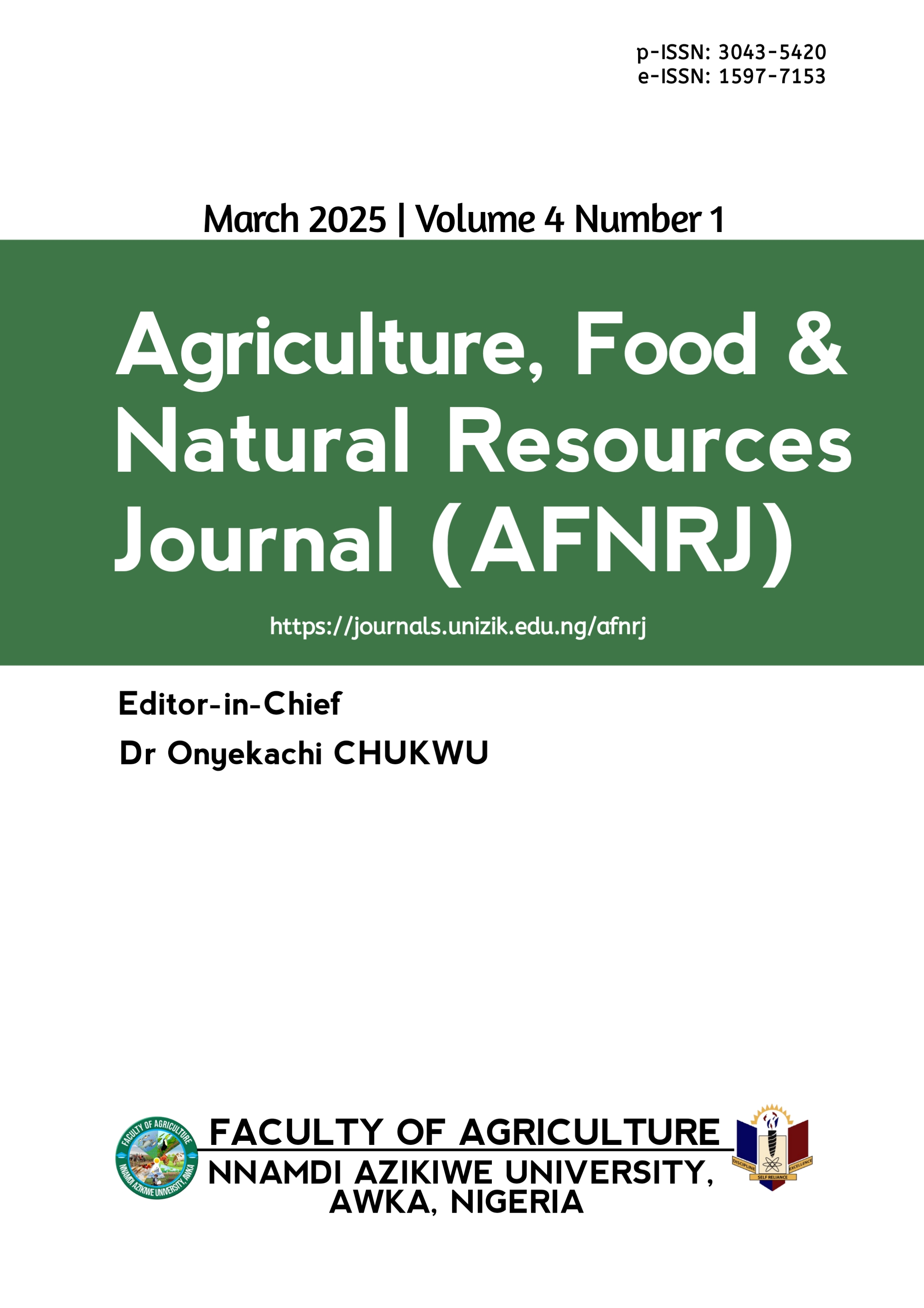Prevalence of antibiotic-resistant bacteria isolated from cultured and wild Clarias gariepinus in Awka, Nigeria
DOI:
https://doi.org/10.5281/zenodo.15115340Keywords:
Antibiotics, Antimicrobial resistance, Aquaculture, Clarias gariepinus, Wild fishAbstract
The presence of antimicrobial resistance in fish poses a serious risk to human health. The study evaluated the prevalence of antibiotic-resistant bacteria in cultured and wild Clarias gariepinus in Awka. A total number of forty-two live adult C. gariepinus were obtained from three aquaculture farms and three sampling points in Ebenebe river. Bacterial isolates were obtained from the muscles of the fish samples and identified through morphological and biochemical tests. The isolates were then tested for antibiotic susceptibility to Tetracycline, Ciprofloxacin, Amoxicillin and Azithromycin using the disc diffusion method. The results revealed that a total of 38 bacterial isolates belonging to five different bacterial species were recovered from the fish muscles. The most prevalent bacteria isolated in cultured and wild C. gariepinus were Staphylococcus aureus, (26.31%), followed by Echerichia coli (21.05%), Aeromonas hydrophila and Pseudomonas aeruginosa (18.42%) while Salmonella enterica was the least prevalent bacteria (15.79%). The antibiotic susceptibility test of the fish samples in this study revealed that bacteria isolated from cultured and wild C. gariepinus showed various levels of resistance to all the tested antibiotics. Bacterial isolates from the study showed high resistance to Tetracycline (60.53%), moderate resistance to Ciprofloxacin (23.68%) and Amoxicillin (13.16%) and low resistance to Azithromycin (7.89%). However, bacteria isolated from cultured C. gariepinus exhibited higher levels of resistance to antibiotics compared to those isolated from wild C. gariepinus. It is therefore recommended that antibiotic resistance patterns in fish should be regularly monitored to help protect the health of fish and human.
Downloads
Published
Issue
Section
License

This work is licensed under a Creative Commons Attribution 4.0 International License.
which permits unrestricted use, distribution, and reproduction in any medium, provided the original author and source are credited.
Authors retain the copyright of their published work in the AFNRJ.





